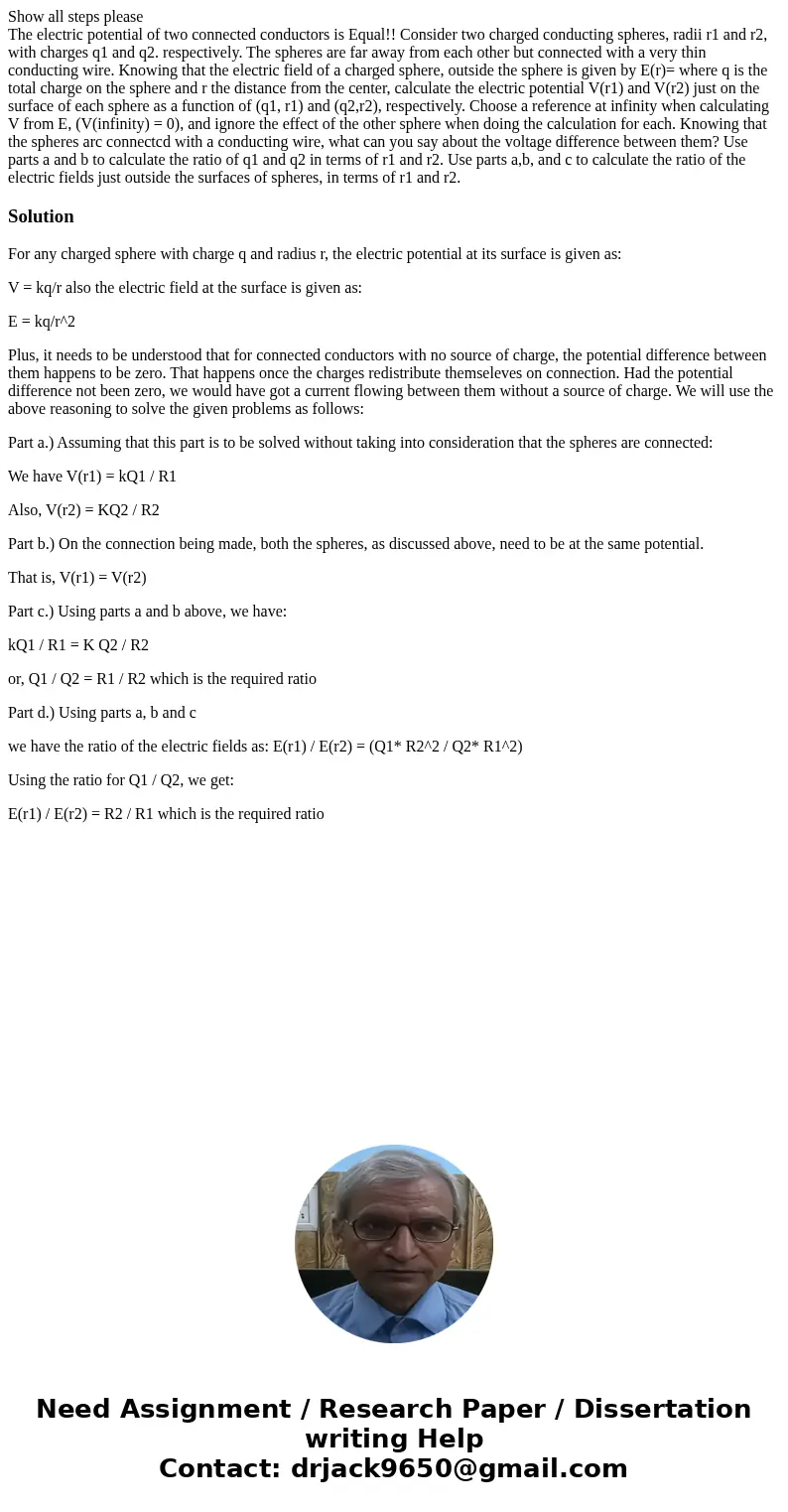Show all steps please The electric potential of two connecte
Solution
For any charged sphere with charge q and radius r, the electric potential at its surface is given as:
V = kq/r also the electric field at the surface is given as:
E = kq/r^2
Plus, it needs to be understood that for connected conductors with no source of charge, the potential difference between them happens to be zero. That happens once the charges redistribute themseleves on connection. Had the potential difference not been zero, we would have got a current flowing between them without a source of charge. We will use the above reasoning to solve the given problems as follows:
Part a.) Assuming that this part is to be solved without taking into consideration that the spheres are connected:
We have V(r1) = kQ1 / R1
Also, V(r2) = KQ2 / R2
Part b.) On the connection being made, both the spheres, as discussed above, need to be at the same potential.
That is, V(r1) = V(r2)
Part c.) Using parts a and b above, we have:
kQ1 / R1 = K Q2 / R2
or, Q1 / Q2 = R1 / R2 which is the required ratio
Part d.) Using parts a, b and c
we have the ratio of the electric fields as: E(r1) / E(r2) = (Q1* R2^2 / Q2* R1^2)
Using the ratio for Q1 / Q2, we get:
E(r1) / E(r2) = R2 / R1 which is the required ratio

 Homework Sourse
Homework Sourse